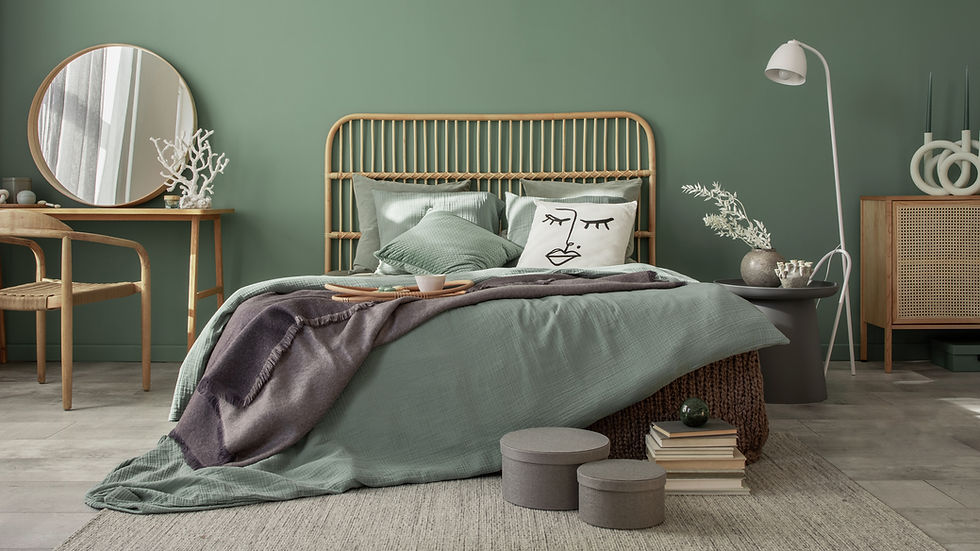The Psychology of Colours in Home Design: Impact on Productivity, Mood, and Emotions
- Chiara Buran
- Feb 5, 2024
- 2 min read
Colours play a crucial role in shaping our perceptions, influencing our moods, and impacting our overall well-being. When it comes to home and interior design, understanding the psychology of colours becomes essential to create spaces that not only look aesthetically pleasing but also contribute positively to productivity, mood, and feelings.
Blue – Calm and Productivity
Blue is often associated with tranquillity, calmness, and serenity. This colour has been shown to lower blood pressure and heart rate, creating a peaceful atmosphere. In terms of productivity, blue is believed to enhance focus and concentration. Consider incorporating shades of blue in home offices or study spaces to create a conducive environment for work or learning.

Green – Balance and Renewal
Green, being the colour of nature, is linked to feelings of balance and harmony. It is known to have a calming effect, reducing anxiety and promoting a sense of renewal. Green is particularly suitable for areas where relaxation and rejuvenation are essential, such as bedrooms or reading nooks. Bringing plants into your home is also an excellent way to introduce the positive effects of green.

Yellow – Energy and Positivity
Yellow is associated with energy, optimism, and positivity. It is known to stimulate mental activity and creativity. However, excessive use of bright yellow can be overwhelming, so it's best used in smaller accents or in spaces where lively energy is desired, such as kitchens or playrooms.

Red – Passion and Excitement
Red is a bold and intense colour often linked to strong emotions like passion and excitement. It can stimulate the appetite and create a sense of urgency. While too much red can be overwhelming, incorporating it in dining areas or spaces where you want to encourage conversation and energy can be beneficial.

Purple – Luxury and Creativity
Purple is associated with luxury, sophistication, and creativity. Lighter shades of purple can have a calming effect, while deeper purples can evoke a sense of opulence. Consider using purple in bedrooms or creative spaces to inspire a sense of imagination and elegance.

Neutral Colours – Timeless Elegance:
Neutral colours such as beige, grey, and white provide a timeless and elegant backdrop. They create a sense of simplicity and can serve as a canvas for other accent colours. Neutral tones are versatile and can be used throughout the home, promoting a clean and cohesive aesthetic.

Incorporating the psychology of colours into your home design can profoundly impact your overall well-being. By strategically using colours, you can create spaces that enhance productivity, evoke positive emotions, and contribute to a harmonious living environment. Whether you choose calming blues, energizing yellows, or luxurious purples, understanding the psychological effects of colours empowers you to design a home that truly reflects and supports your desired lifestyle.




Comments